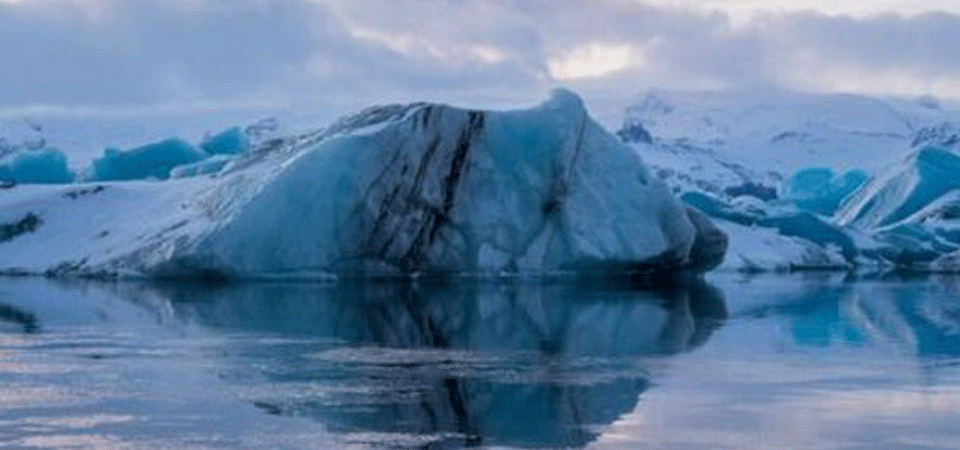‘Curbing black carbon emissions can slow glacier melt’

By A Staff Reporter
Kathmandu, June 10: Black carbon deposits originating from factories, cooking and vehicles are compounding the effects of climate change to speed up the melting of the Himalayan glaciers. More aggressively curbing black carbon emissions can slow glacier melt and improve the security of water resources in the region, according to a new report published by the World Bank.
Current policies in place to reduce black carbon emissions – through enhancing fuel-efficiency standards, phasing out diesel vehicles and promoting electric cars – while laudable, will reduce black carbon deposits by only 23 per cent, not enough to prevent an acceleration of water release from glacier melt in the region, according to the report titled “Glaciers of the Himalayas: Climate Change, Black Carbon and Regional Resilience”. However, new economically and technically feasible policies are within reach to contain glacier melt at current levels, said a press release published by World Bank said.
Improving the efficiency of brick kilns, which account for roughly half of black carbon emissions, would reduce melt-accelerating deposits, and modest up-front investments that would quickly pay off, are available. Cleaner cook-stoves and cleaner fuels are another key ways to reducing black carbon emissions. Incentivising households to switch from biomass or coal to liquefied petroleum gas (LPG), and, in the long run, to solar energy could achieve this.
“Recent devastating flash floods attributed to a collapsing glacier in the Himalayas were a sobering reminder of the sometimes disastrous effects of climate change and the dangers we have to protect against,” said Hartwig Schafer, World Bank Vice President for South Asia. “As glaciers shrink, the lives and livelihoods of many people downstream are affected by changes in the water supply. We can slow glacier melt by collectively acting to curb the black carbon deposits that are speeding the thinning of the ice. Regional cooperation to protect these resources will pay important dividends for the health and well-being of the people in the region.”
The mountain ranges of the Himalayas, the Hindu Kush, and the Karakoram span 2,400 kilometers across six nations and contain 60,000 km² of ice – storing more water than anywhere besides the Arctic and Antarctic. Melting glaciers and loss of seasonal snow pose significant risks not just to the people who live at their foot but to the stability of water resources in the South Asia region more broadly. The impacts will only get worse unless greater efforts are made to curb black carbon deposits that are accelerating melting.
More than 750 million people depend on the glacier- and the snow-fed Indus, Ganges, and Brahmaputra rivers for freshwater, and changes in the volume and timing of flows will have important economic and social implications. By 2050, from 1.5 billion to 1.7 billion people in South Asia are projected to be vulnerable to water scarcity, the press release said.
Glaciers of the Himalayas finds that in addition to changing temperatures and precipitation patterns, black carbon deposits – air-borne particles generated by incomplete combustion from brick kilns, diesel exhaust, and the burning of biomass – are accelerating glacier and snow melt in these ranges. Business-as-usual practices would further speed glacier melt, with harmful implications for the health and well-being of people in the region.
Finally, countries in South Asia must work together to manage hydropower resources, an important source for the region’s clean energy needs and a generator of energy trade and security. Unstable water flow from glacier melt and more variable precipitation underscore the need to stabilize availability over the longer term to make hydropower more viable.
“Water resource management policies must evolve because the trends we are observing point to a different and more challenging future,” said Muthukumara Mani, lead economist in the World Bank’s South Asia region and a lead author of the report. “Success will require an active and agile cooperation between researchers and policymakers so both groups can continue to learn about the problems at hand.
Recent News

Do not make expressions casting dout on election: EC
14 Apr, 2022
CM Bhatta says may New Year 2079 BS inspire positive thinking
14 Apr, 2022
Three new cases, 44 recoveries in 24 hours
14 Apr, 2022
689 climbers of 84 teams so far acquire permits for climbing various peaks this spring season
14 Apr, 2022
How the rising cost of living crisis is impacting Nepal
14 Apr, 2022
US military confirms an interstellar meteor collided with Earth
14 Apr, 2022
Valneva Covid vaccine approved for use in UK
14 Apr, 2022
Chair Prachanda highlights need of unity among Maoist, Communist forces
14 Apr, 2022
Ranbir Kapoor and Alia Bhatt: Bollywood toasts star couple on wedding
14 Apr, 2022
President Bhandari confers decorations (Photo Feature)
14 Apr, 2022










